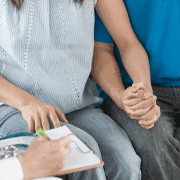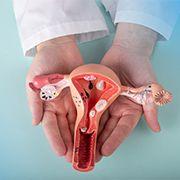How Long Does It Take For Chlamydia To Show Up
In This Article
How Long Does It Take For Chlamydia To Show Up
Dr. Sanjana
Updated on March 11, 2024
Medically verified by Dr. Pournami
Fact checked by Dr. Arya

Wellness
5 min read
Chlamydia is one of the common sexually transmitted diseases or STDs. It is common to be unaware of this condition until it gets complicated.
Are you aware of the time period it takes for chlamydia to show its presence through certain symptoms? Confused about how long it will take? Or how to get it tested?
Karepedia is here to simplify this disease as much as possible for you.
Let us dive into the world of chlamydia and understand why you need to test yourself regularly for chlamydia.
What is Chlamydia?
In simple terms, it is a bacteria. This bacteria is known to cause more than just an STD. There are different strains of chlamydia. Different strains lead to different diseases.
The most common ones are the ones causing STDs. These strains are known as serovars.
| Serovars | Diseases |
|---|---|
| A, B, C | Trachoma - disease of the eyes |
| B, Ba, D to K | Conjunctivitis, Urethritis, Proctitis, Cervicitis, Pneumonia in infants |
| L1, L2, L3 | Lymphogranuloma venereum |
Chlamydia spreads through vaginal penetration, anal sex and oral sex. It also transmits during delivery from mother to child.
Chlamydia is one of the most common STD worldwide. The good news is they are easily curable. The tricky part of this infection is timely diagnosis. If untreated, complications can occur.
Why Does It Take So Long for Chlamydia To Show Up ?
It's a common disease of the younger population, especially girls. It normally doesn’t show up with any symptoms.
When it does, it takes 2-3 weeks for symptoms to appear. Why does it take so long ?
The replication phase of chlamydia is quite complicated and prolonged. The longer the bacteria takes to multiply, the longer the incubation period is.
Chlamydia replication cycles has 2 forms:
- Elementary body (EB): extra cellular, inert bodies. They are only responsible for spreading from one cell to another.
- Reticulate body (RB): replicating form of chlamydia. Can only multiply.
The entire process takes 2-3 weeks. After this, a sufficient number of bacteria accumulate to produce symptoms.
Symptoms In Women
- Abnormal discharge through the vagina
- Burning sensation while urinating
- In severe cases, the bacteria moves up into the uterus, causing a disease known as pelvic inflammatory disease (PID). PID is a complication of chlamydia. Here, you may experience fever, lower abdominal pain along with the symptoms mentioned above.
Symptoms In Men
- Penile discharge
- Burning sensation with urination
- Swelling of both testicles with pain, although rare
There can also be sores in the genital area. The discharge is purulent and foul-smelling. This bacteria can affect other parts of the body other than the genital tract.
- Proctitis is the inflammation of the rectum. You may experience pain, bleeding and discharge per rectum.
- Conjunctivitis can occur when infection spreads to the eyes.
- Throat infection during oral sex.
If you or your partner are facing any of these symptoms, refer to a healthcare professional right away.
It is also advisable to undergo a routine annual STD check up if any of these risk factors apply to you.
- You are sexually active and younger than 25 years of age
- Multiple sexual partners
- Sex partner with a known STI
- Early onset of sexual activity
- Unprotected sexual activity
 10mint
10mintSexual Health Matters: How To Maintain Your Sexual Health ?
 10mint
10mintYour Guide to Sexual Health Screening and Preventive Measures
 10 mints
10 mintsSTDs in Women: Comprehensive Guide on Symptoms and Treatments
Get a Callback Now
What If I Don't Get It Tested?
As mentioned, chlamydia can cause irreversible complications if left untreated.
In women, it can cause the following complications:
- Pelvic inflammatory disease
- Infertility
- Ectopic pregnancy
- Abortions
In men, it can cause:
- Epididymitis
- Prostatitis
- Long term lower abdominal pain
- Reactive arthritis
- Increased risk of contracting other STDs especially HIV.
- In newborns it can cause conjunctivitis or pneumonia.
You can expect your healthcare professional to perform a couple of blood tests, or vaginal/ penile/ rectal swab for culture. A urine sample can also be tested.
It takes 1-2 weeks for antibodies to develop. So the blood tests will only be useful when you test it after 1-2 weeks from exposure.
Can It Be Treated?
Chlamydia can easily be treated. It's a common infection with a simple treatment protocol.
-
Either a one-drug regimen or a 7 day course of antibiotics can be prescribed.
-
These medications can stop the infection, but it cannot reverse the changes it has already caused. Therefore, timely and prompt treatment is of utmost importance.
-
Sex should be avoided until both you and your partner have completed treatment. Wait for 1 week before having sex again post treatment.
-
Re-evaluate after 3 months to ensure complete eradication.
-
Recurrence is very common. Therefore annual check ups become important. Make sure to use condoms to prevent transmission.
Chlamydia is a very common STI with a long incubation period.
Incubation period is 2-3 weeks.
Testing should be done in 1-2 weeks after exposure.
It is easily treated and cured, however complications cannot be reversed.
Both the partners must be treated to prevent recurrence.
Use barrier methods such as condoms to prevent transmission.

